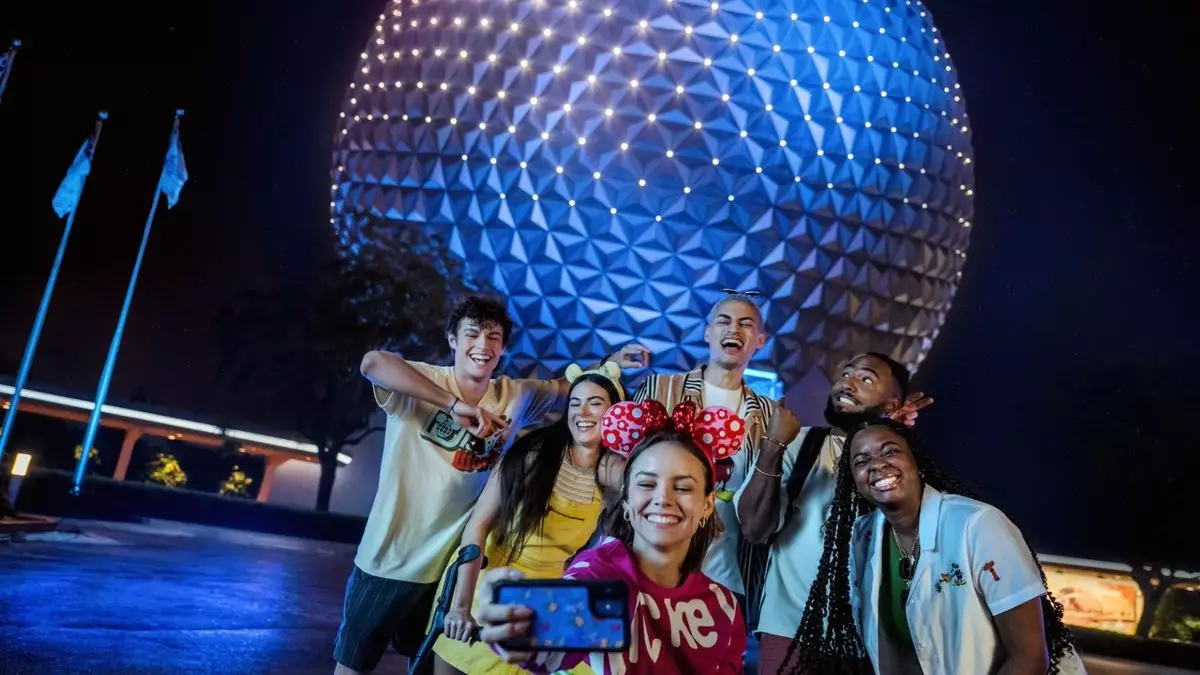The magic of Disney is no longer just about enchanted castles and beloved characters; it now encompasses a growing complexity of ticketing options aimed at enhancing guest experiences. The latest addition to Disney’s roster is the Lightning Lane Premier Pass, a skip-the-line service set to revolutionize how guests interact with attractions. Although the prospect of streamlined access is appealing, it also raises questions about accessibility, pricing, and the overall guest experience.
The Lightning Lane Premier Pass offers guests unprecedented flexibility by allowing them access to Lightning Lanes without the need to reserve a specific time slot. This major shift away from traditional scheduling is not just a gimmick; it represents a significant evolution in how theme parks manage crowds and guest satisfaction. Priced between $129 and $449 per person, the pass is designed to cater to different park experiences at both Walt Disney World in Florida and Disneyland in California.
This pricing model is reflective of the various factors influencing demand, including the time of year and specific park events. Given the scale of Disney’s operations, the introduction of such a service may help alleviate some of the frustration guests experience when waiting in long standby lines, especially for trending attractions.
While the Premier Pass stands out for its no-scheduling requirement, it inevitably leads to comparisons with existing options: the Lightning Lane Multi Pass and the Lightning Lane Single Pass. The former enables scheduling across multiple attractions but comes with a price tag that ranges from $15 to $39, while the latter focuses on the hottest rides, typically costing between $10 and $25. These options, although functional, necessitate a degree of planning that can detract from the spontaneous joy often found in visiting theme parks.
This juxtaposition highlights a fundamental change in customer expectation; today’s visitors increasingly favor flexibility over rigid itinerary adherence. While the Multi Pass and Single Pass still serve a purpose, the no-reservation aspect of the Premier Pass could attract a significant number of guests who prefer a casual day at the park without the burden of carefully timed schedules.
The rollout strategy for the Premier Pass is also noteworthy, with a planned pilot launch beginning on October 23 for Disneyland and October 30 for Walt Disney World. Limiting availability creates an air of exclusivity—drawing in those eager to experience a new way to navigate the parks. However, the restriction on purchase for certain guests (like those staying at deluxe resorts) may trigger feelings of exclusion among regular park-goers who may not have access to such accommodations.
Moreover, the differing operational strategies in California and Florida could potentially confuse visitors. For instance, while Disneyland allows a pass to cover attractions in both Disneyland Park and Disney California Adventure Park, Disney World requires a pass for each individual park. This creates a need for guests to conduct additional research before making their purchase, potentially undermining the simplicity that the Premier Pass aims to offer.
A primary advantage of the Premier Pass is the additional perks it boasts, such as unlimited digital downloads of attraction photos and videos—an appealing incentive for many guests. Nonetheless, the question remains: is this pass worth the investment? At its highest price point of $449, it may alienate families or individuals already facing the financial burden of visiting a theme park, widening the gap between those who can afford such luxuries and those who cannot.
Furthermore, while standby lines and virtual queues will continue to operate for most attractions, the Premier Pass creates a tiered system of access that may lead to tensions among guests. Those who have paid a premium for the Premier Pass may expect a vastly superior experience, leading to frustration when encountering long waits for rides still serviced by standby lines.
The introduction of the Lightning Lane Premier Pass signals a broader trend in the theme park industry aimed at providing more tailored guest experiences. It reflects an understanding of evolving consumer behavior and the need for flexibility. However, as exciting as these new offerings are, they necessitate a careful balancing act as Disney navigates the challenges of accessibility, pricing, and fairness among its diverse guest population. The success of the Premier Pass may ultimately hinge on Disney’s ability to integrate it seamlessly within the rich tapestry of experiences that define the parks while ensuring that magic remains accessible to all.


Leave a Reply